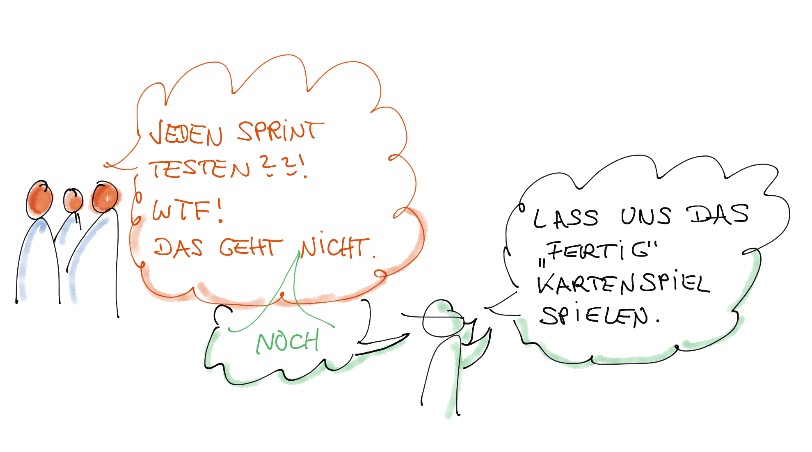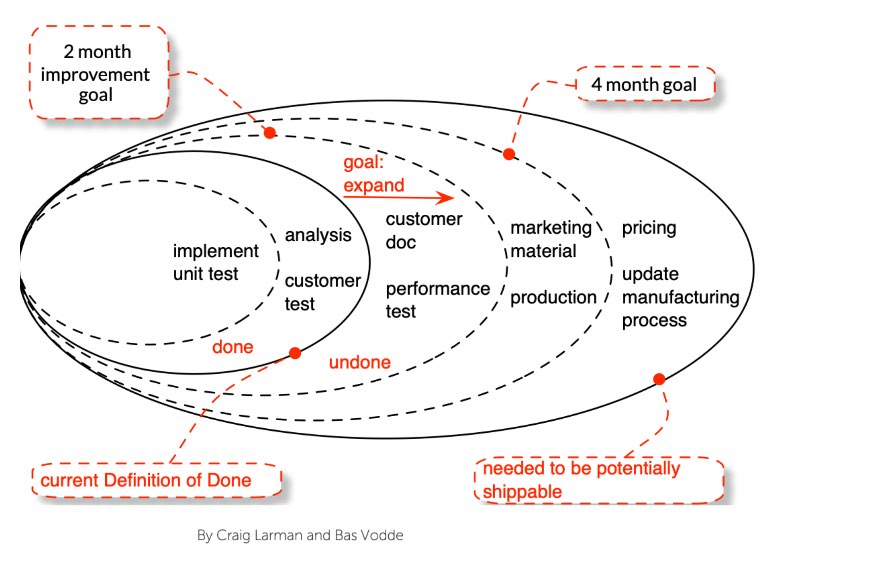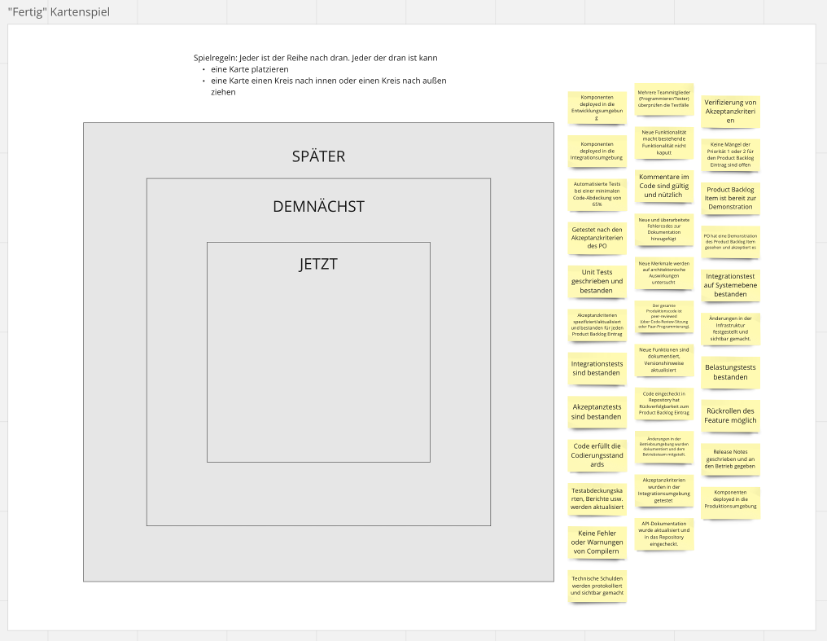Welcome to the exciting world of Scrum. As a Scrum Master, you face many challenges - especially at the beginning. But perhaps we can make it easier for you to get started. In this blog post, we would like to introduce you to the "Done Game", a collaborative approach that will help you and your Scrum team to develop a "Definition of Done (DoD) to create.

The "Done Game" can be explained quite well using ideas from Craig Larman and Bas Vodde and is a fun way to help your team get clear on what "done" means:

Typical sequence of the Done Game
To play the "Done Game", get your Scrum team together and go through the following steps:
- Introduce the game and explain its purpose. Make sure everyone understands that the goal is to create a clear definition of what "done" means when an increment meets the quality standards for a product.
- Give everyone a few minutes to individually brainstorm and write down what should be included in the definition of "done". Encourage participants to think about all necessary actions and to take different perspectives, such as the user's and the customer's, the organization's and the team's.
- Ask each participant to present their ideas in turn. Write each idea on Post-It notes or a large sheet of paper and summarize similar ideas. This could look like this, for example:

- After everyone has presented their ideas, you work together as a team to prioritize the criteria based on different horizons:
- Asks the team to identify the criteria that are relevant "now", i.e. that are critical and must be included in the next sprint definition of "done".
- Ask the team which criteria are "soon" or "soon to be" relevant, i.e. important, but can only be included in a future sprint definition of "finished".
- Ask the team which criteria are relevant "later", i.e. desirable but not critical for the definition of "finished".
- Write down the "now" criteria in a clear, concise form that everyone can easily refer to during the sprint. The definition of "done" should be treated as a commitment for Increments, and the Scrum Team should ensure that each Increment meets the agreed criteria before the work is considered "done". The "soon" and "later" criteria can be included in future sprints as needed.
Why all this?
The "Done Game" can be a powerful tool for Scrum Teams to ensure they have a shared understanding of what it means for work to be "done". By prioritizing the criteria and focusing on the most important elements first, the Scrum team can deliver high-quality, functional increments that meet stakeholder needs and add value to the product.
Your job as a Scrum Master in the Done Game
Incidentally, your job as a Scrum Master is to create a long-term pattern:
- The "now" area becomes larger as elements from the "soon" area are added. This means that the quality improves iteratively, incrementally.
- The "soon" area is reduced by moving unnecessary elements to the "later" area. This strengthens lean thinking in the Scrum team.
Conclusion on the Done Game
The Done Game is a relaxed and collaborative approach that helps new Scrum Masters create and improve a Definition of Done together with their Scrum Team. By teaching your team the Done Game, you enable them to develop a shared understanding of what it means for work to be 'done' and ensure that you deliver high quality Increments that meet stakeholder requirements and enrich the product.
We hope that this article will help you to improve your skills as a Scrum Master and take your team to the next level. Have fun trying out the "Done Game" and good luck on your journey as a Scrum Master!

Write a comment